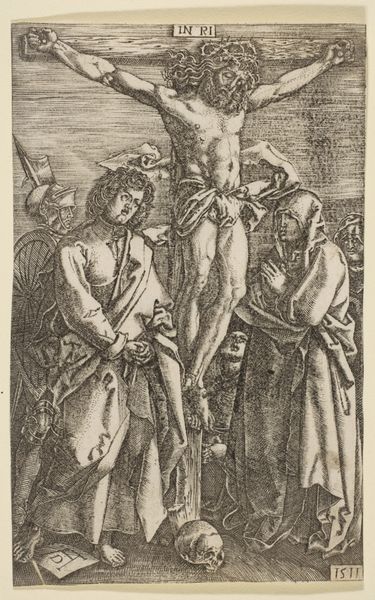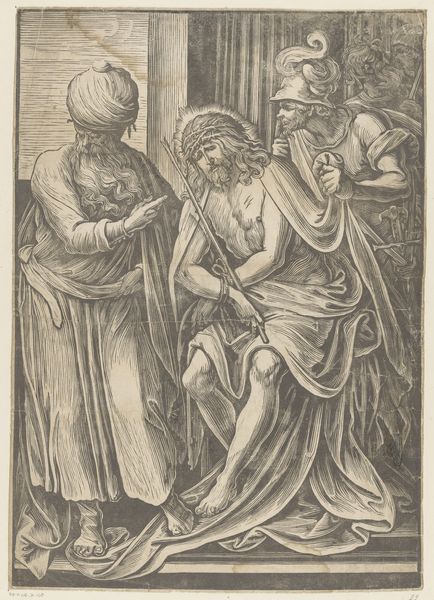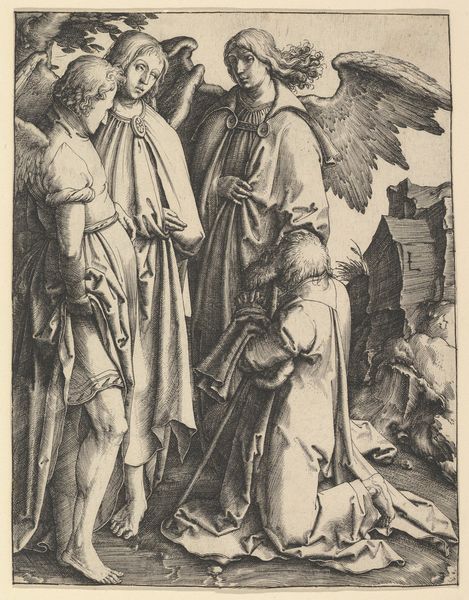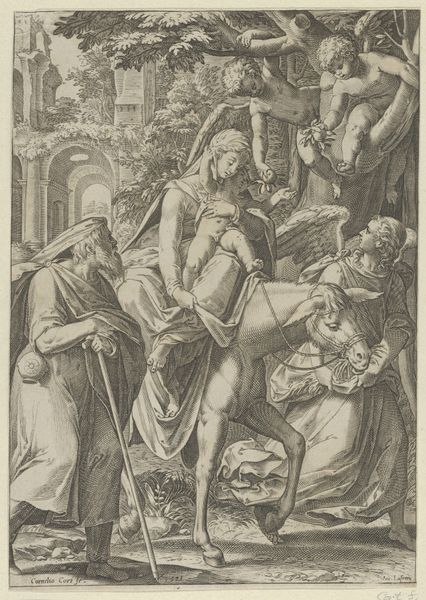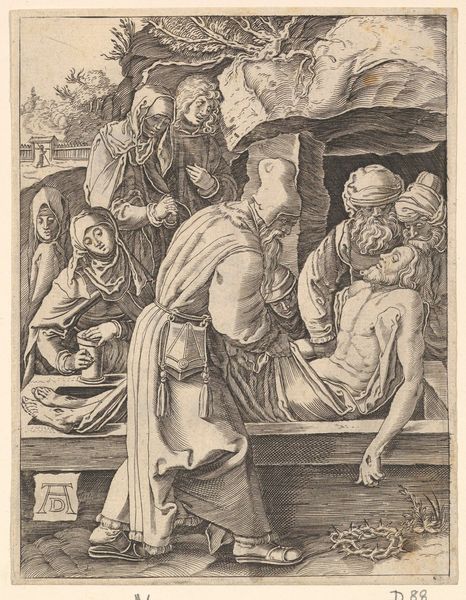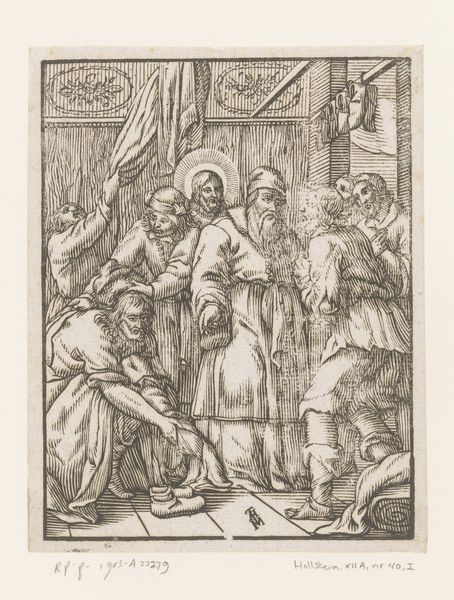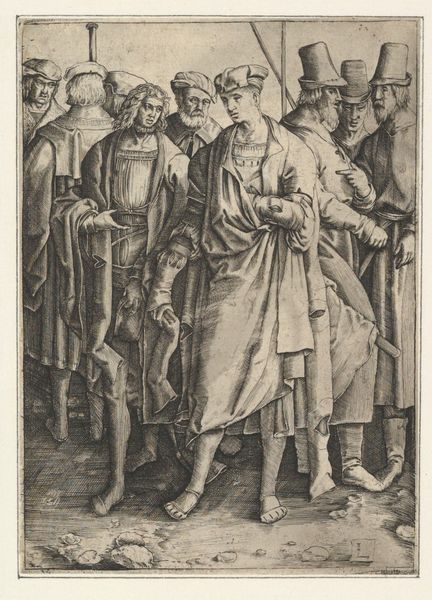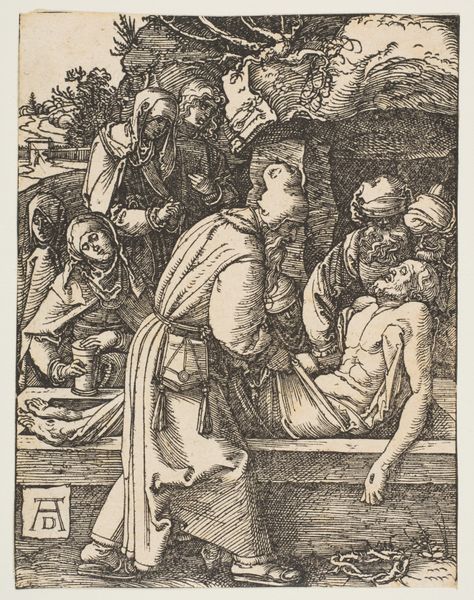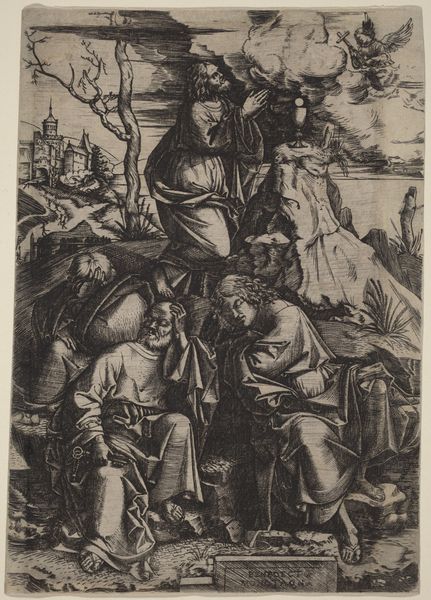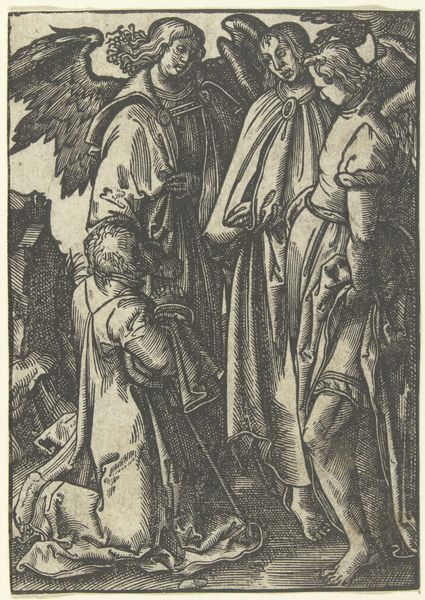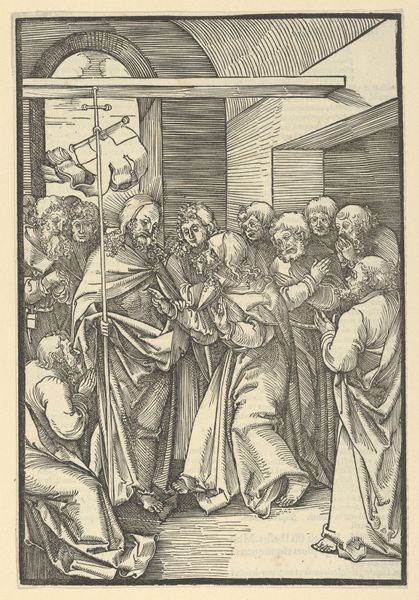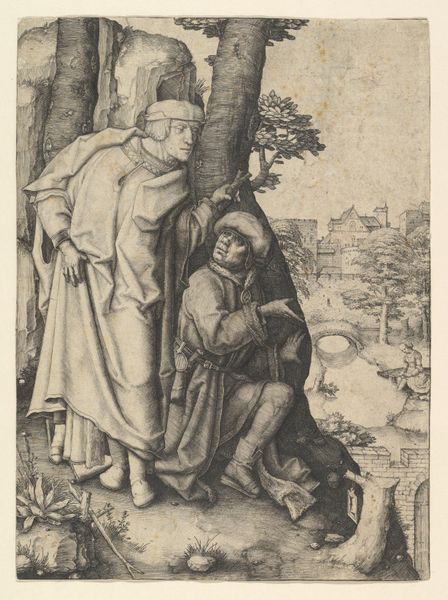
print, engraving
# print
#
figuration
#
11_renaissance
#
history-painting
#
northern-renaissance
#
engraving
Dimensions: height 114 mm, width 85 mm
Copyright: Rijks Museum: Open Domain
Curator: Here we have Lucas van Leyden’s “Christus door Pilatus aan het volk getoond,” or “Ecce Homo,” made sometime between 1510 and 1514. It's an engraving, a print. Editor: What hits me first is the weight, the sheer sorrow radiating from Christ. The textures feel so palpable despite being on paper. The cloak hangs heavy, and his hands, bound… there’s this palpable sense of injustice hanging in the air, isn't it? Curator: Absolutely. "Ecce Homo"—"Behold the Man"—is laden with iconographic significance. Van Leyden captures that precise moment of public humiliation. Note the details: Pilate presenting Jesus to the masses, the crown of thorns…they are powerful reminders of the Passion. Even the discarded armor lying below. It is about the surrender of earthly power, wouldn't you agree? Editor: It’s striking how everyone but Christ seems to avoid eye contact. The crowd is implied, felt through its absence in the individual figures. It makes the viewer an unwilling participant. Curator: The print medium itself is vital here. Engravings allowed for wide dissemination, spreading this potent image, this narrative, across Europe. What’s remarkable about Van Leyden is the mastery of light and shadow using such precise line work. He creates depth and emotional resonance. Look at the face of Pilate. You see the moment of the tragic event written all over it, do you not think? Editor: True. And Christ himself, that gaunt figure. But also, what is going on with the gestures! All of those figures seem so dramatic! Curator: You see similar gesture work across art from the Northern Renaissance. It goes to depict their emotional turmoil but perhaps also their moral position in society! Editor: Seeing it laid out like this...makes one question our role in judgment, condemnation. Art forces us to face ourselves, right? It demands confrontation, a second look. It makes me sad to witness such profound agony, but also grateful to an artist who refuses to let us look away. Curator: It leaves a powerful, haunting echo, doesn't it? One that lingers long after we've moved on to the next piece.
Comments
No comments
Be the first to comment and join the conversation on the ultimate creative platform.
